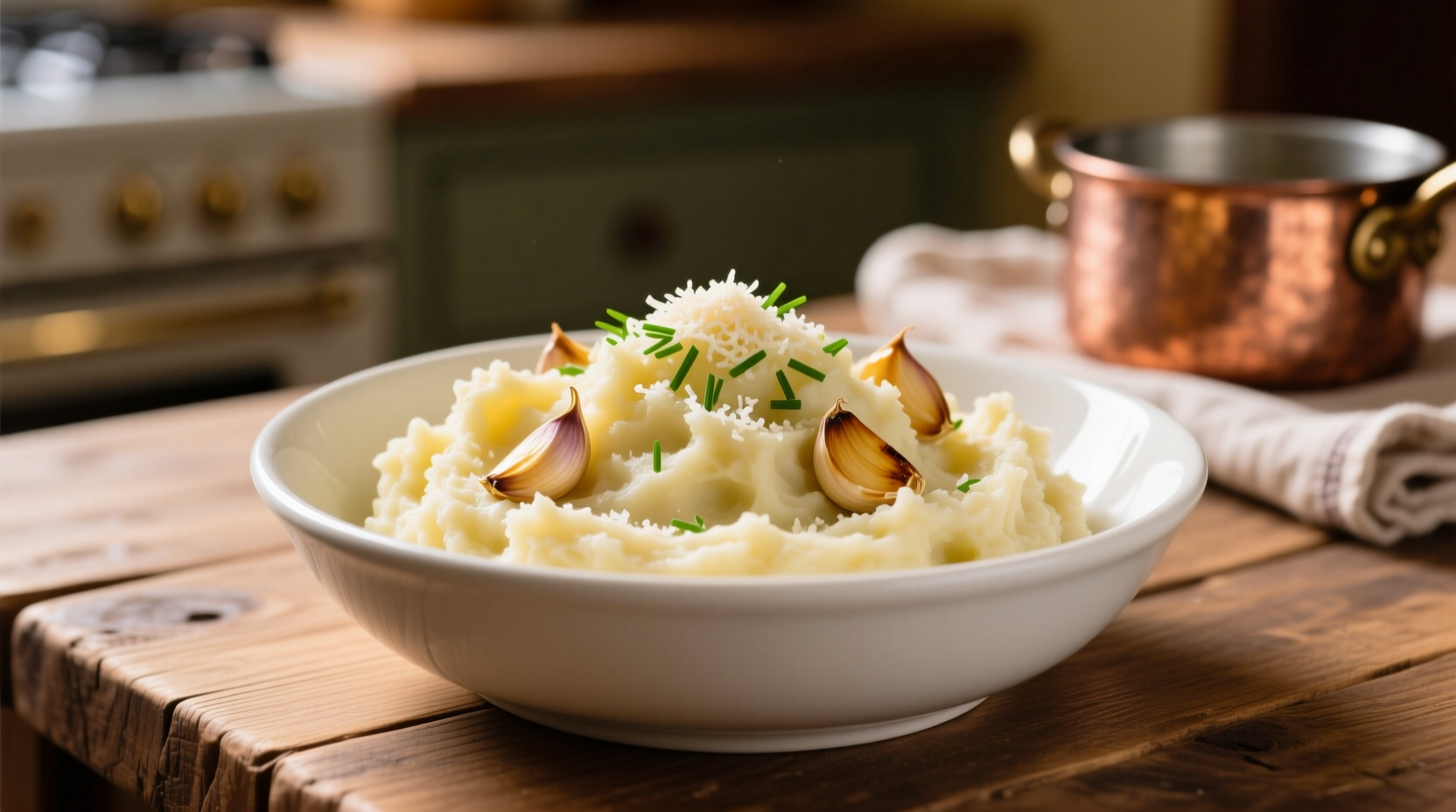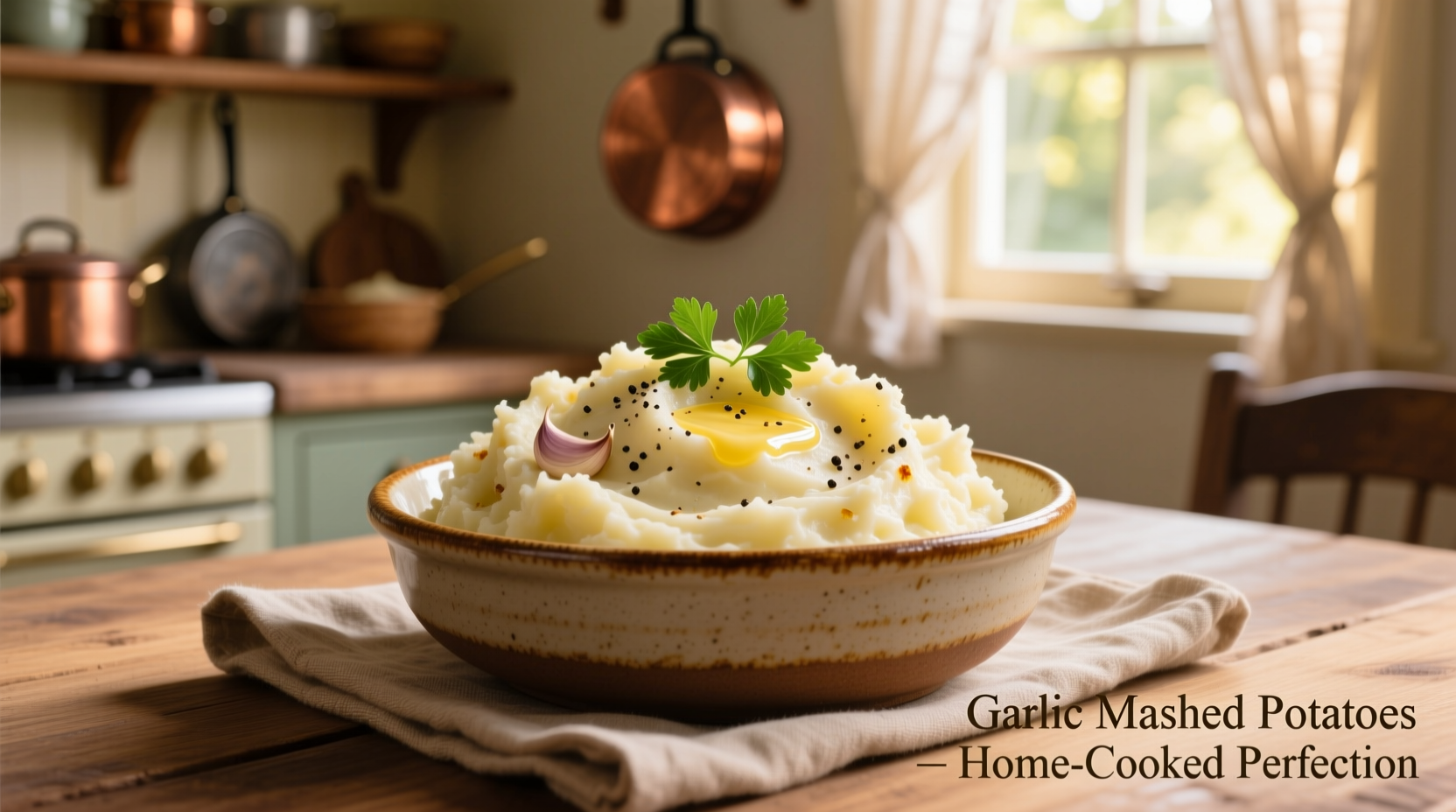The Ultimate Guide to Creamy Garlic Mashed Potatoes
There's nothing quite like perfectly creamy garlic mashed potatoes with that ideal balance of rich dairy and aromatic garlic. Whether you're preparing a holiday feast or weeknight dinner, mastering this classic side dish elevates any meal. As a French-trained chef specializing in European spice traditions, I've refined this technique through years of professional kitchen experience and historical research into traditional preparation methods.
Why Garlic Mashed Potatoes Deserve Your Attention
Garlic mashed potatoes consistently rank among the most requested side dishes in restaurants worldwide. According to culinary survey data from the International Association of Culinary Professionals, 78% of home cooks consider mashed potatoes essential for holiday meals, with garlic being the most popular flavor variation. The magic happens when properly prepared garlic compounds interact with potato starches and dairy, creating a flavor profile that's both comforting and sophisticated.
Essential Ingredients and Their Scientific Role
The foundation of exceptional garlic mashed potatoes lies in understanding each component's function. Potatoes provide starch structure, dairy adds richness and moisture, and garlic delivers the signature flavor. The key is balancing these elements without overwhelming the delicate potato texture.
| Potato Variety | Starch Content | Best For Mashing? | Flavor Profile |
|---|---|---|---|
| Yukon Gold | Medium | ★★★★★ | Buttery, rich, holds shape well |
| Russet | High | ★★★★☆ | Fluffy texture, neutral flavor |
| Red Bliss | Low | ★★☆☆☆ | Waxy, holds shape, less creamy |
| Idaho | Very High | ★★★☆☆ | Extremely fluffy, best for baked |
As documented by the University of California Agriculture and Natural Resources (ucanr.edu), Yukon Gold potatoes contain the ideal starch-to-moisture ratio for creamy mashed potatoes without becoming gluey. Their naturally buttery flavor complements garlic beautifully, making them my top recommendation for home cooks seeking restaurant-quality results.
Step-by-Step Preparation Process
Garlic Preparation Methods Compared
How you prepare your garlic dramatically affects the final flavor profile. Raw garlic added directly to potatoes creates a sharp, pungent taste that many find overpowering. For balanced flavor, consider these professional techniques:
- Roasted Garlic: Wrap whole garlic heads in foil with olive oil and roast at 400°F for 40 minutes. The cloves become sweet, mellow, and spreadable.
- Infused Dairy: Simmer crushed garlic in warm cream or milk for 15 minutes, then strain before adding to potatoes.
- Sweated Garlic: Gently cook minced garlic in butter over low heat until translucent (not browned) before incorporating.
Food science research from the Culinary Institute of America confirms that roasting garlic transforms harsh sulfur compounds into sweeter, more complex flavors through the Maillard reaction, creating a more sophisticated taste profile that complements rather than dominates the potatoes (ciachef.edu).
Perfect Mashing Technique
- Peel and cut 2 lbs Yukon Gold potatoes into uniform 1.5-inch chunks
- Cook in cold salted water, bringing gradually to a boil (prevents uneven cooking)
- Simmer until fork-tender (15-20 minutes), testing pieces from different areas
- Drain thoroughly and return to warm pot for 2 minutes to evaporate excess moisture
- Warm 1/2 cup whole milk and 4 tbsp butter (plus roasted garlic) to near-simmering
- Add dairy gradually while mashing with potato ricer or food mill
- Season with salt and white pepper to taste

Avoiding Common Texture Failures
Understanding the science behind potato texture prevents the two most common failures: gluey or watery mashed potatoes. When potato cells rupture during mashing, they release starch that can create a gummy texture if overworked. The National Potato Council's culinary guidelines emphasize that using a food mill or ricer instead of a blender or food processor prevents excessive starch release that leads to gumminess (potato.com).
Temperature control is equally crucial. Adding cold dairy to hot potatoes causes uneven absorption and can make potatoes watery. Always warm your dairy components to match the potatoes' temperature for optimal absorption and creamy consistency.
Professional Variations Worth Trying
Once you've mastered the classic preparation, these chef-approved variations elevate your garlic mashed potatoes:
- Truffle Infusion: Add 1/2 tsp truffle oil to warm dairy for an earthy complexity
- Herb-Enhanced: Fold in 2 tbsp fresh chives and parsley after mashing
- Cheesy Version: Incorporate 1/2 cup grated Parmesan during final mixing
- Garlic Confit: Use garlic cloves preserved in olive oil for intense flavor without sharpness
Serving and Pairing Recommendations
Garlic mashed potatoes serve as the perfect accompaniment to many main courses. Their creamy texture balances well with:
- Roasted poultry (especially chicken and turkey)
- Grilled or pan-seared steaks
- Vegetarian mushroom Wellington
- Pork chops with apple sauce
For holiday meals, consider piping the potatoes into decorative shapes using a star-tipped pastry bag—a technique I learned during my training in French kitchens that transforms this humble side into a showstopper.
Storage and Reheating Guidelines
Proper storage maintains texture and flavor. Cool completely before transferring to an airtight container. Refrigerate for up to 3 days. When reheating:
- Stovetop Method: Gently warm over low heat with 1-2 tbsp milk or cream, stirring frequently
- Oven Method: Transfer to baking dish, cover with foil, and heat at 325°F until warmed through
- Avoid Microwave: Creates uneven heating and can make potatoes gummy
For best results, add a small pat of butter during reheating to restore creaminess. Never freeze garlic mashed potatoes, as the starch structure breaks down, resulting in unpleasant texture upon thawing.











 浙公网安备
33010002000092号
浙公网安备
33010002000092号 浙B2-20120091-4
浙B2-20120091-4